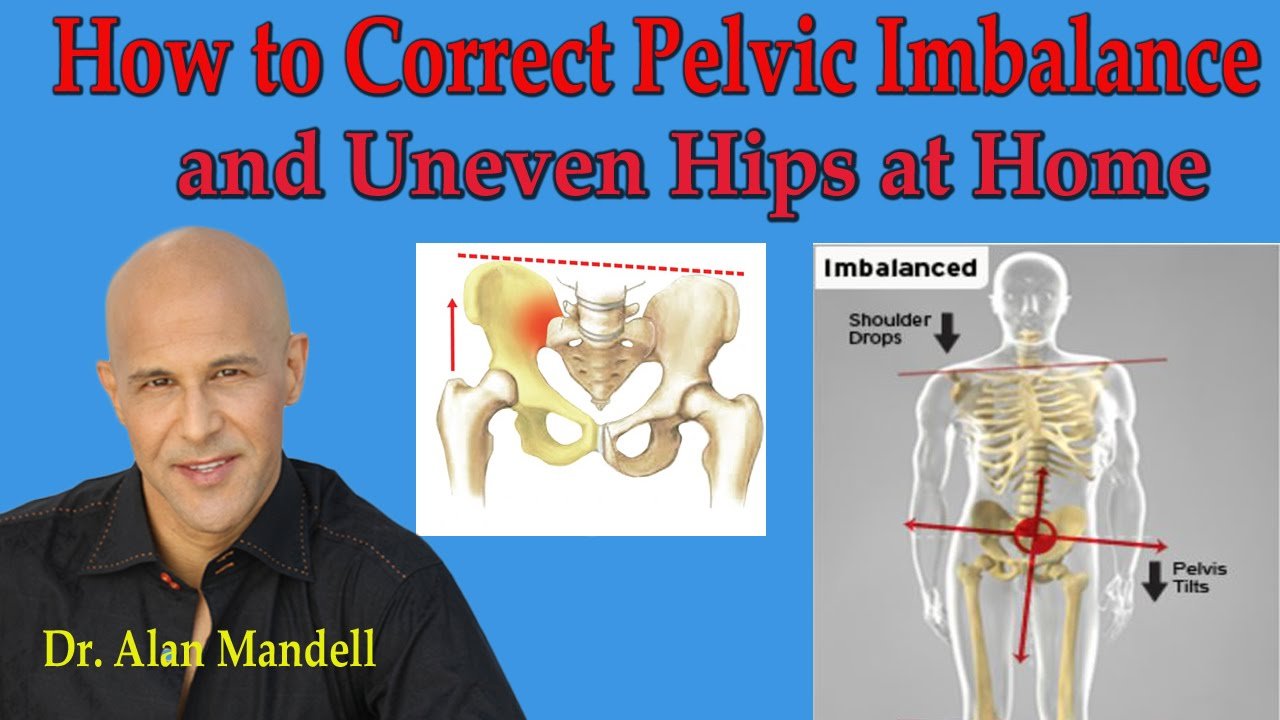Learn how pelvic imbalances caused by poor posture and lifestyle choices affect your body. Discover simple, effective exercises from Dr. Alan Mandell to realign your body and relieve discomfort.
Introduction:
Pelvic imbalances can wreak havoc on your body, leading to discomfort, sciatica, and even back pain. But don’t worry! Dr. Alan Mandell’s teachings offer simple yet effective exercises to help realign your pelvis and alleviate these issues. Many of us suffer from these imbalances due to poor posture and prolonged sitting, but with the right knowledge and stretching techniques, you can feel better and regain mobility. Let’s dive into how this can all be corrected through simple movements.
Understanding Pelvic Imbalance:
The pelvis, specifically the sacroiliac joints (SI joints), is a crucial part of the body’s skeletal structure. When these joints become misaligned, it can lead to pain, discomfort, and even leg length discrepancies 🦵. Dr. Alan Mandell’s research shows that the pelvic region plays a huge role in overall body posture and movement. If your pelvis is not aligned properly, it can cause muscle imbalances, affecting your posture and leading to discomfort in the lower back and hips.
Why Does Pelvic Imbalance Happen?
Pelvic imbalances often occur due to poor posture, repetitive activities, and weak core muscles 💪. When we sit or stand with poor posture for extended periods, the muscles in the pelvis, lower back, and hips become overstretched or contracted. This imbalance can make one leg appear longer than the other, leading to discomfort and inefficient movement patterns. Dr. Alan Mandell’s work highlights how these misalignments lead to pain and discomfort, often resulting in conditions like sciatica, herniated discs, and arthritis.
The Role of the Gluteus Medius and Piriformis Muscles:
The gluteus medius and piriformis muscles are essential for hip abduction and external rotation 🏋️♂️. When these muscles become tight or weakened, they can pull the pelvis out of alignment, contributing to discomfort and imbalances. Stretching these muscles can help realign the pelvis and reduce pain associated with muscle tightness. Dr. Alan Mandell’s exercise techniques focus on stretching and strengthening these muscles to improve posture and reduce pain in the pelvic region.
Simple Stretches to Correct Pelvic Imbalance:
Here are three key stretches to realign your pelvis and relieve discomfort:
- Hamstring Stretch:
- Sit with one leg extended on a chair or bed, keeping the knee straight.
- Lean forward and feel the stretch in the back of the thigh. Hold for 30-40 seconds on each leg.
- This will stretch the hamstrings and release tension in the pelvis, helping with posterior pelvic tilt. 🦵
- Piriformis Stretch:
- Cross one leg over the other and lean forward towards the ankle.
- For a deeper stretch, lay on your back and pull the knee towards your chest. Hold for 30 seconds.
- This stretches the piriformis, a muscle that can contribute to sciatic nerve pain when tight. 💥
- Gluteus Medius Stretch:
- Cross one leg over the other and gently pull the knee towards the opposite shoulder.
- This targets the gluteus medius, which can help stabilize the pelvis and relieve discomfort. 🧘♂️
How These Stretches Help:
By incorporating these stretches into your routine, you can address pelvic misalignments that may be causing discomfort in your lower back, hips, and legs. These exercises also help strengthen the muscles that support the pelvis, improving posture and reducing the likelihood of recurring pain. Dr. Alan Mandell’s approach focuses on using simple movements to realign the pelvis and reduce inflammation, helping you move more efficiently and comfortably.
The Importance of Proper Posture:
Proper posture plays a crucial role in preventing pelvic imbalances. Dr. Alan Mandell’s work emphasizes the importance of maintaining a neutral spine and avoiding prolonged periods of sitting or standing in improper positions. Regularly practicing these stretches and focusing on improving your posture will help you maintain pelvic alignment and prevent future discomfort.
Conclusion:
Pelvic imbalances may seem like a small issue, but they can have a significant impact on your overall health and well-being. With the right exercises and stretches, you can correct these imbalances and alleviate pain. Dr. Alan Mandell’s methods provide simple, effective ways to realign your pelvis, reduce inflammation, and restore mobility. By making these stretches a part of your daily routine, you can start to feel better and move more efficiently.
Want to learn more about improving your health? Subscribe to Dr. Mandell’s YouTube Channel for more tips and techniques! 📺
Dr. Alan Mandell’s Bio:
Dr. Alan Mandell is a renowned health expert who has helped countless individuals achieve better health through natural remedies and lifestyle changes. His approach combines the power of science and nature to improve overall well-being. 🌱
